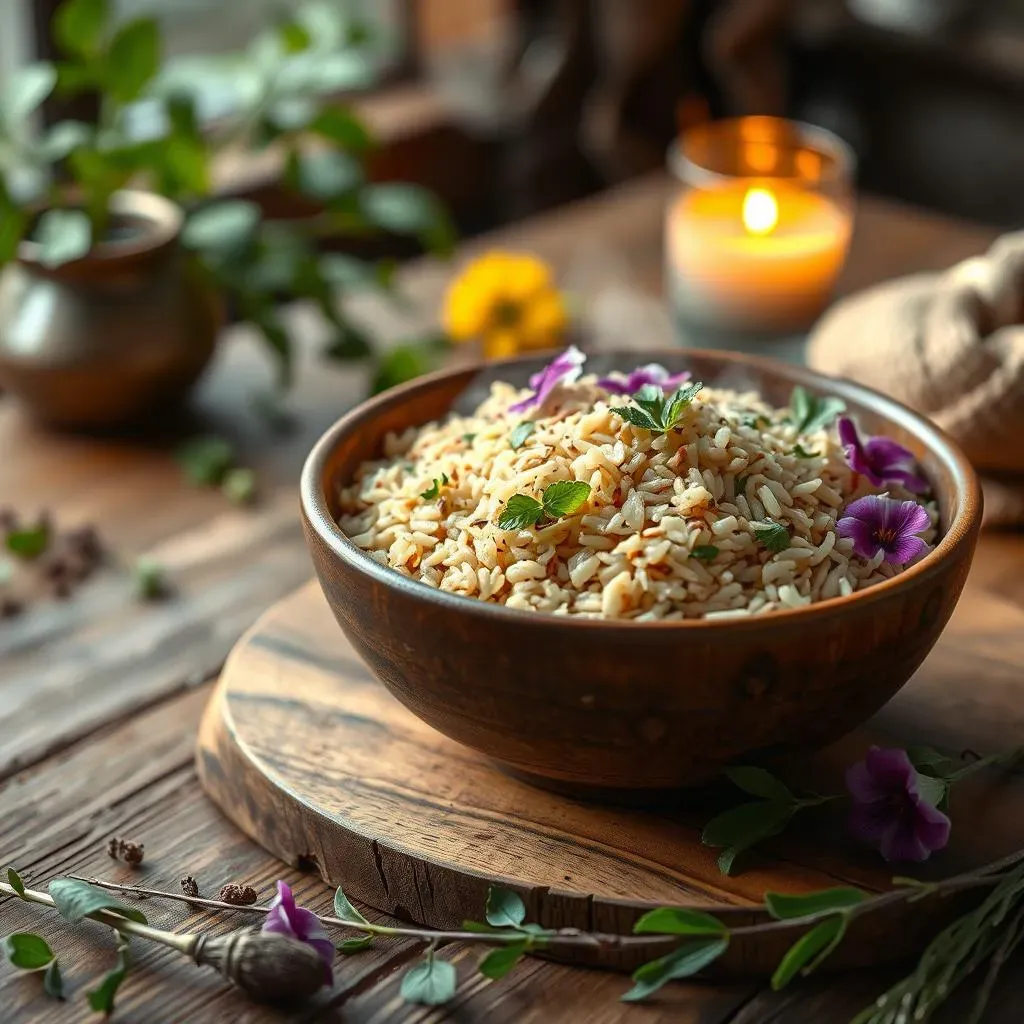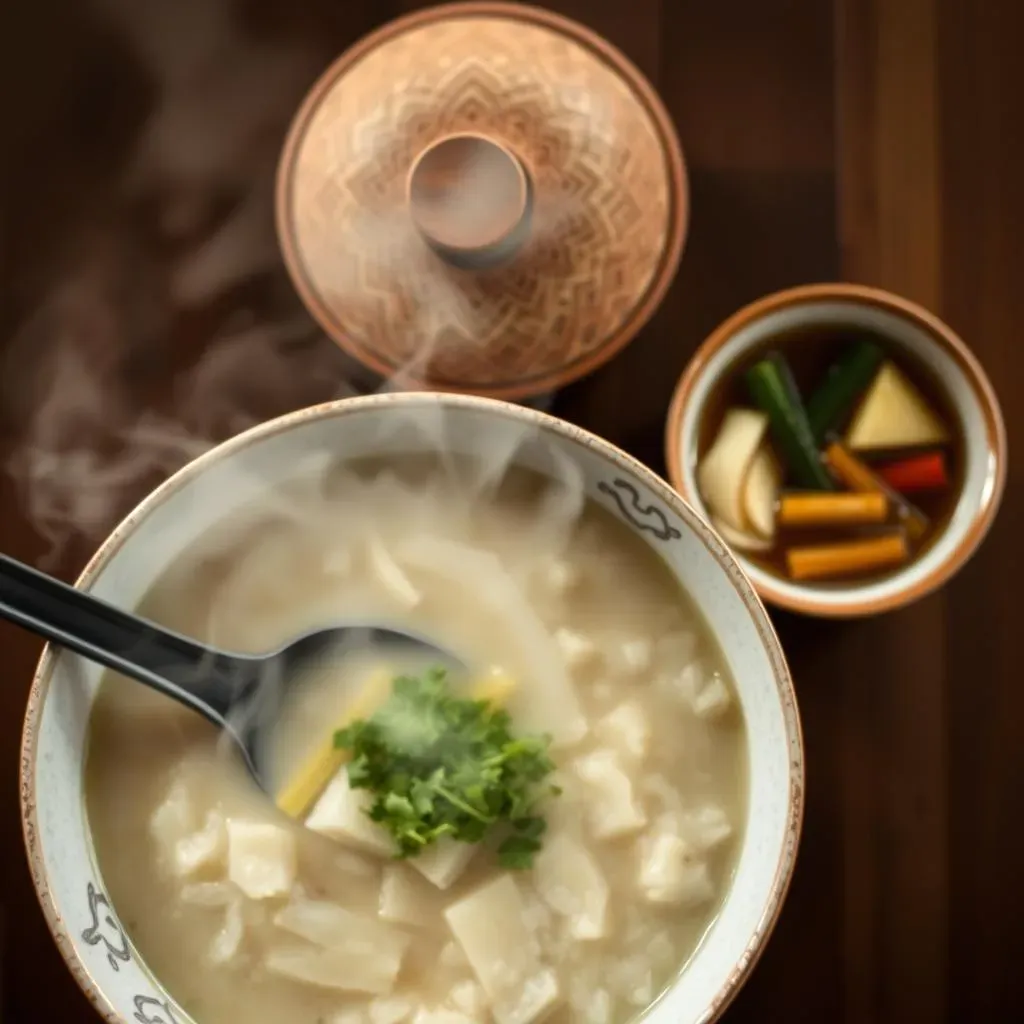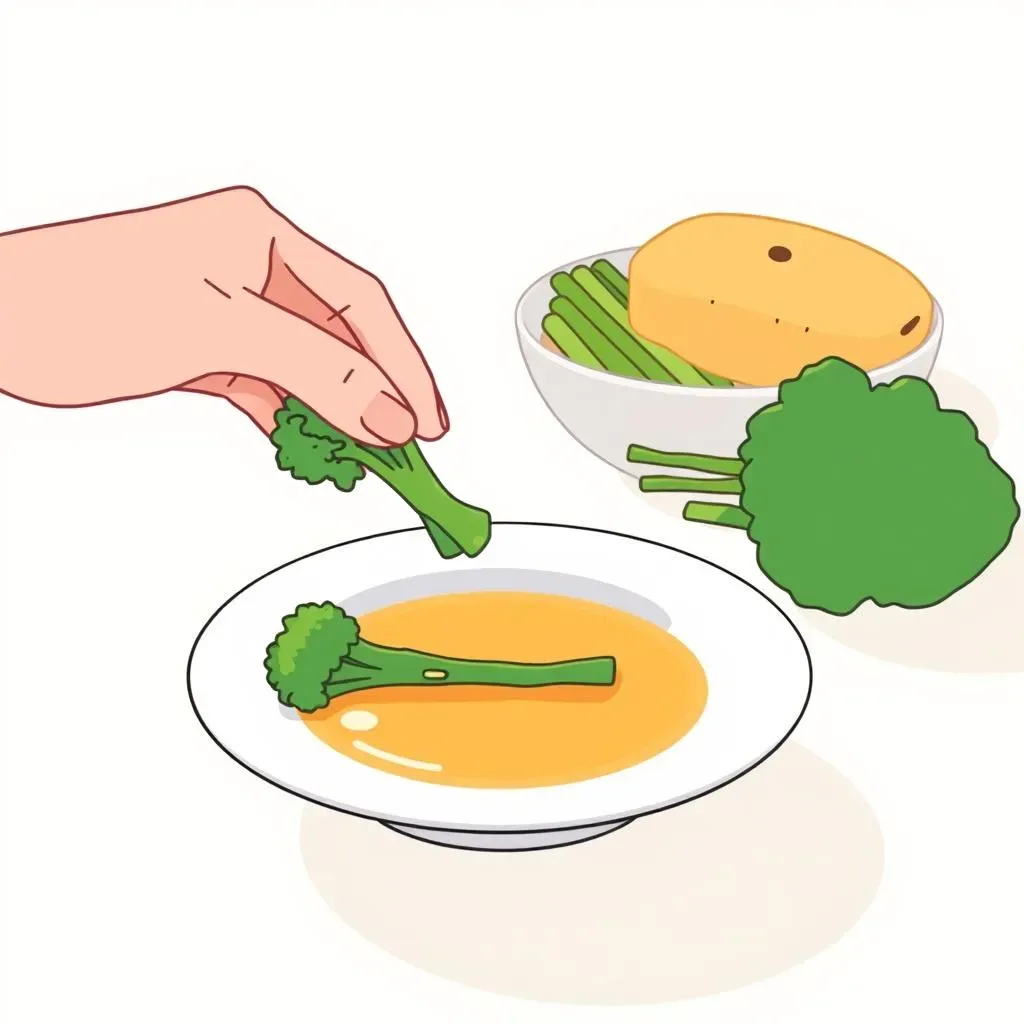Table of Contents
Forget the greasy takeout version; we're talking about a different kind of relationship with rice. You might be scratching your head, wondering how fried rice, of all things, could possibly have anything to do with detoxification. I get it, it sounds a little wild. But what if I told you that the true power of rice for cleansing lies not in the frying pan, but in a tradition that goes way back? This article isn't about your usual "detox" fad. Instead, we're going to explore a gentler, more holistic approach based on ancient Eastern medicine – the rice cleanse. We'll examine how this method, which uses simple, carefully prepared rice, can help your body get rid of built-up waste and promote your well-being. We'll also discuss how it goes beyond just a quick fix, and how it can help you make lasting changes to your lifestyle. So, let's ditch the idea of fried rice as a guilty pleasure and instead discover how rice, in its purest form, can be a tool for a healthier you. Get ready to learn about the surprising detoxification benefits of fried rice, or rather, the rice that paves the way for a cleaner, more refreshed you.
The TCM Rice Cleanse: A Different Approach to Detoxification

The TCM Rice Cleanse: A Different Approach to Detoxification
The Core Idea: Gentle Cleansing
Okay, so, forget everything you think you know about those crazy juice cleanses. This rice cleanse, rooted in Traditional Chinese Medicine (TCM), isn't about starving yourself or some extreme deprivation. It's more like giving your body a gentle nudge in the right direction. Think of it as a spring cleaning for your insides, getting rid of the gunk that builds up over time. It's not about rapid weight loss; it's about supporting your body's natural detoxification processes. The main goal here is to help your digestive system and other organs, like your liver, work more efficiently. We're talking about real, lasting change, not just a quick fix.
This approach to cleansing sees the body as a whole system, where everything is connected. It's not just about your digestion; it's about your energy levels, your skin, and even your mood. According to TCM, when your body is overloaded with toxins, you might experience things like headaches, skin issues, or even those annoying menstrual cramps. By giving your digestive system a break with a simple diet of rice, we're helping it to reset. The goal is to get your body back to its natural state of balance. It's like hitting the reset button on your internal systems and it’s surprisingly effective.
More Than Just a Diet
Now, here's the thing: this isn't just about eating rice for a few days. It's about taking a step back and looking at your overall lifestyle. You can't expect to do a rice cleanse and then go back to all the same habits that caused your body to get bogged down in the first place. The real magic happens when you use this cleanse as a starting point for making more conscious choices about your diet and lifestyle. It's about changing your mindset and behavior patterns, gradually. It's about tuning into your body and paying attention to what it's telling you.
Think of it like this: you wouldn't wash your car and then immediately drive it through mud, would you? The rice cleanse is like that carwash. It’s a great way to start fresh, but you also need to be mindful of what you're putting back into your body and how you're treating it. This approach is about long-term well-being, not just a temporary solution. It’s about making changes that will stick with you, and that will help you feel better in the long run. It's a journey, not a destination.
Feature | TCM Rice Cleanse | Typical Detox Diet |
|---|---|---|
Focus | Gentle, whole-body cleansing | Rapid weight loss, often harsh |
Approach | Holistic, long-term well-being | Short-term, restrictive diets |
Diet | Simple, cooked rice, congee, miso | Juices, smoothies, very limited food |
Goals | Improved digestion, energy, balance | Quick results, often unsustainable |
Long Term | Promotes lifestyle changes | Difficult to maintain long term |
Preparing Your Rice for the Detox: Beyond Fried Rice

Preparing Your Rice for the Detox: Beyond Fried Rice
Choosing the Right Rice
Okay, so we're not talking about the fluffy white rice you might be used to. For this cleanse, you want to go for the good stuff: natural, unpeeled rice. Think brown rice, or even better, a variety like short-grain brown rice. The key here is that the rice still has its bran layer intact. This is where all the good stuff is – the fiber, the vitamins, and the minerals. It's like the difference between eating a whole apple and just drinking apple juice. You want all the goodness, not just the sugary part. This isn't about making the tastiest fried rice; it's about selecting the best rice to support your body's cleansing process.
And before you ask, no, you can't just use any old rice you find in the cupboard. We want to go for the least processed option we can get. Think of it this way: the less the rice has been messed with, the more it has to offer. So when you're at the grocery store, look for that unpeeled, natural rice. It might not be the prettiest option, but it's definitely the better one for this purpose. It's like choosing the hiking boots over the stilettos – one is practical and helpful, the other, not so much when you're trying to climb a mountain.
Cooking it Right
Now that we've got the right kind of rice, let's talk about how to cook it. It's not about tossing it in a pan with a bunch of oil and spices. This isn't about making fried rice at all; it's about preparing the rice in a way that makes it easy for your body to digest. We want to cook it until it's soft and gentle on your system. The recommended water-to-rice ratio is usually about 2 to 3 parts water for every 1 part rice. Think of it like making a very simple porridge. You can use a regular pot, but if you have a pressure cooker or a rice cooker, even better. These appliances will help you get the rice perfectly cooked every time. It's all about making the process as straightforward as possible, so you can focus on the cleansing.
The aim here is to let the rice cook until it’s nice and soft, almost like a thick soup. This will help make it super easy for your body to break it down and absorb all the good stuff, without putting extra stress on your digestive system. It's like giving your stomach a little vacation. And remember, we're keeping it simple. No added salt, no oil, no fancy spices. Just pure rice and water, cooked with intention. It's all about letting the rice do its thing, naturally. We're not trying to create a culinary masterpiece, but rather a simple tool for your body to cleanse itself.
Aspect | Do | Don't |
|---|---|---|
Rice Type | Natural, unpeeled (brown, short-grain) | White, processed, instant |
Water Ratio | 2-3 parts water per 1 part rice | Too little or too much water |
Cooking Method | Pressure cooker, rice cooker, pot | Frying, adding oil or salt |
Cooking Result | Soft, easily digestible | Hard, undercooked, or greasy |
How to Do the Rice Cleanse and Maximize Detoxification Benefits

How to Do the Rice Cleanse and Maximize Detoxification Benefits
The Cleanse in Action
Alright, so you've got your rice prepped; now, let's talk about how to actually do the cleanse. It's pretty straightforward, really. During your cleanse period, which can be anywhere from one to a few days, you're going to be eating only cooked rice. Yep, that's it. No fancy sauces, no extra toppings, just the plain, soft rice we talked about. You can eat as much as you need to feel satisfied. This isn't about starving yourself; it's about giving your digestive system a break. Think of it as a reset button for your gut. You can also drink warm to hot water, herbal teas, or a good amount of water per day – around 2-3 liters. It's all about keeping hydrated and helping your body flush out any toxins. This is your time to be gentle with yourself, and listen to what your body needs.
Now, you might be thinking, "Seriously? Just rice?" And yeah, it might sound a little boring, but there's a method to this simplicity. The idea is to give your digestive system a rest from processing complex foods. It’s a chance for your body to focus on cleansing and repair. It's like taking a vacation from all the heavy work. This is also a great time to get in tune with your body. You might notice you're not as hungry as you thought you were, or that you feel lighter and more energized. It’s a good opportunity to tune into the signals your body is sending. This isn't about deprivation; it's about giving your body what it really needs – a break, and a chance to reset.
Aspect | Guideline |
|---|---|
Main Food | Plain, cooked rice (as much as you need) |
Hydration | Warm water, herbal teas, 2-3 liters of water daily |
Duration | 1 to a few days |
Goal | Rest digestive system, support detoxification |
Mindset | Gentle, mindful, listen to your body |
Creating a Cleansing Rice Soup (Congee) and the Power of Miso

Creating a Cleansing Rice Soup (Congee) and the Power of Miso
Congee: Your Comforting Companion
Okay, so you're doing this rice cleanse, and while plain rice is great, sometimes you just want something a little more... comforting, right? That's where congee comes in. Congee is basically a rice porridge, and it's like the ultimate hug in a bowl. It's super gentle on your stomach, and it's really easy to digest, which is perfect for a cleanse. You can make it by simply cooking your rice with even more water than usual, until it breaks down into a creamy, soupy texture. Think of it as rice that's gone to a spa – it’s super relaxed and ready to soothe you. It’s a great way to add some variety to your cleanse without adding any unnecessary stress to your system. It's like giving your insides a warm, gentle massage.
The beauty of congee is in its simplicity. You don't need any fancy ingredients or complicated techniques. Just rice and water, cooked slowly until it's nice and creamy. And while you're keeping it simple during the cleanse, this doesn't mean it has to be boring. You can adjust the consistency to your liking, making it as thick or as thin as you prefer. It’s all about finding what feels good for your body. Congee is a versatile dish, and while we’re not adding extra ingredients during the cleanse, it's good to know that in normal times, you can add all sorts of things to it – from veggies to chicken. But for now, it’s just about that pure, gentle rice goodness, helping you cleanse from the inside out. It's like a blank canvas that your body can use to heal and reset.
Miso Soup: A Boost of Goodness
Now, let's talk about miso soup. It's not just a tasty side dish at your favorite sushi place; it's actually a powerhouse of goodness that can really support your cleanse. Miso is a fermented soybean paste, and it's packed with probiotics, which are great for your gut. Think of them as the little helpers in your digestive system, keeping everything balanced and happy. When you add miso to your diet, you're not only getting a flavorful boost, but also helping your gut flora thrive. And a happy gut means a healthier you. Miso soup is a great addition to your cleanse because it adds some extra nutrients and helps keep your system working smoothly. It's like giving your gut a little pep talk.
To make miso soup, you can combine root vegetables, like carrots or daikon radish, with some cabbage and wakame algae. These ingredients add extra vitamins and minerals, making your soup even more nourishing. And the key here is to avoid cooking the miso for too long. You want to add it at the end, just before you're ready to eat, so you don't destroy all those beneficial probiotics. It's like adding the finishing touch to a masterpiece – it’s important to get it just right. Miso soup is more than just a warm, comforting broth; it’s a way to support your body’s natural detoxification process. It’s a great way to make your cleanse even more effective, and it tastes pretty good too!
Feature | Congee | Miso Soup |
|---|---|---|
Main Ingredient | Rice | Miso paste |
Texture | Creamy, porridge-like | Brothy, with vegetables |
Benefits | Easy to digest, comforting | Probiotics, nutrients, supports digestion |
Preparation | Rice cooked with extra water | Miso paste added to broth with vegetables |
Aftercare: Reintroducing Foods PostRice Detox

Aftercare: Reintroducing Foods PostRice Detox
Stepping Back into the World of Food
Okay, so you've completed your rice cleanse – congratulations! But now comes the tricky part: reintroducing foods. You can't just jump back into eating everything you were before. That would be like running a marathon and then immediately trying to lift heavy weights. Your body needs a gentle transition. The key here is to go slow and pay attention to how your body reacts. Think of it like a detective – you’re trying to figure out what your body likes and what it doesn't. You want to add one new food at a time, and then wait a day or two before adding another. This way, if something doesn't agree with you, you'll know exactly what caused the issue. It's a process of discovery, and it's all about listening to your body's signals.
Start with easy-to-digest foods, like steamed vegetables or a simple broth. Avoid anything heavy, greasy, or processed. It's like easing back into exercise after a long break – you wouldn't start with a high-intensity workout, right? The same goes for your food. As you reintroduce foods, pay close attention to how you feel. Does your digestion feel okay? Is your skin clear? How does your mouth feel? These are all important clues. If you notice any discomfort, like bloating or indigestion, it might be a sign that that particular food isn't right for you, at least not right now. This is a great way to identify any food intolerances you might have. It's about building a new, more conscious relationship with food. It's a chance to really tune into what your body is telling you, and it's a super valuable skill to have.
Step | Action |
|---|---|
1 | Start with easy-to-digest foods (steamed veggies, broth) |
2 | Introduce one new food at a time |
3 | Wait 1-2 days before adding another food |
4 | Observe your body's reactions (digestion, skin, mouthfeel) |
5 | Avoid heavy, greasy, or processed foods |
Listening to Your Body's Wisdom
This aftercare period is just as important as the cleanse itself. It’s where you really get to see the benefits of what you’ve just done. You might find that you have more energy, that your skin is clearer, or that you feel lighter and more balanced overall. But it's also important to be patient with yourself. It might take a little while for your body to fully adjust. The key is to keep listening to what your body is telling you, and to be gentle with yourself throughout the process. It’s not about perfection; it’s about progress. This whole journey is about reconnecting with your body and understanding what it needs to thrive. It's like learning a new language – it takes time and practice, but it's totally worth it in the end.
Remember, the rice cleanse isn't just a quick fix; it's a starting point for a healthier, more conscious way of living. It's about building a new relationship with food, one that's based on listening to your body's needs and making choices that support your overall well-being. It's a process, not a race, and it's okay to take your time. This is your journey, and you're in control. So, go slow, be patient, and enjoy the process of discovering what makes your body feel its best. The rice cleanse is a tool, but you’re the architect of your own health. It's about empowering yourself to make informed choices that will help you feel good for the long term. This isn't just about food; it's about taking care of yourself, inside and out.